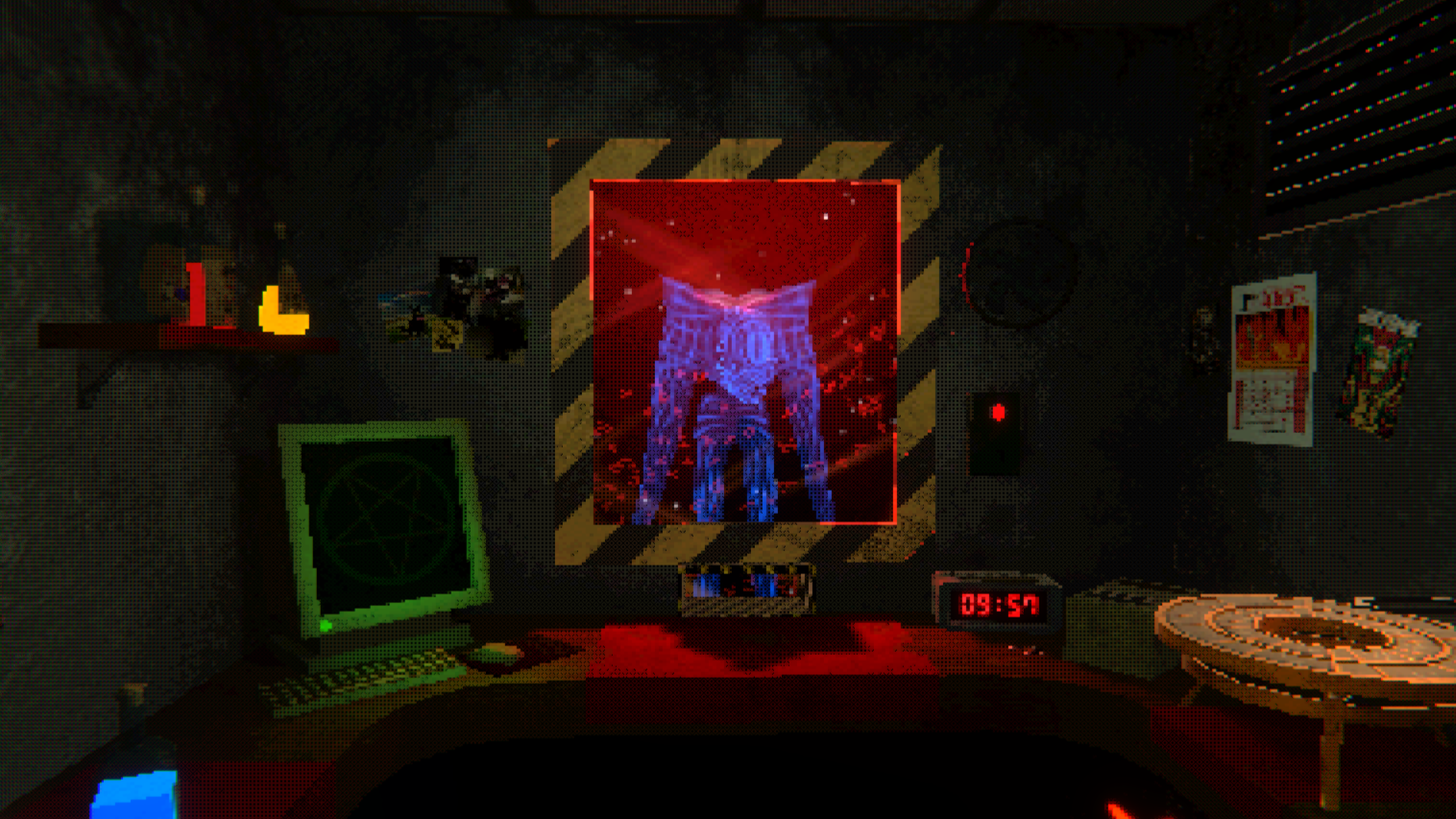Tom O'Brien
Engineered Damnation
A Unity title programmed for my first year as a Games Programming student
Leadership and Design
Development on Engineered Damnation was over 6 weeks, so it was from the starting gun. The game was actually my own pitch initially, the final game and what we direction we took it in was not the same, but thats a fun part of development.
I found myself in the Lead programmer role due to my experience with programming prior to my time at AIE, and I couldn't have asked for anything more, I was in a perfect position to help my class mates develop more experience in systems, and to push myself into bringing to life artists and designers ambitions for the first time.

Numbers and the secrets they hold
Early on Engineered Damnation was envisioned as a demon summoning game, so I set out to design a system that encoded where demons came from, the type of demons they were, and their accessories all in a bit code, with each of the three categories encoding a double digit in the code, then the full encoding could also be used to determine what steps were necessary to summon them

I also made a quick tool to help the designers with it.
Its no secret I love numbers, and this system opened up two great benefits, one it allowed us to have a lot of "dumb" systems that interfaced only with the number, if the player used a blue potion it only changed the required digits, or if a demon was summoned it only needed to do a number comparison to verify if it was requested. Secondly it also allowed us to add or remove new demons and demon summing techniques rather quickly, only the tools related or the demon summoning platform needed to be aware of the changes! God I love maths.


Whats The Time?
Early on in development we realised that the choice of PS1 shaders mean that designing UI was a lot more difficult as the pixelation effects were crunching down everything, so the game had a heavy focus on diegetic UI, one of these pieces was a digital clock. The clock shows the player how long is left in their shift, the loop playing through a typical 9-5, however we were much to early in development to know how long the gameplay loop was, so I wiped up a little bit of time maths.
The clock would tick through the day depending on how long the designers set the gameplay loop for, and also supported them changing the narrative, as the designers could also change the starting time of the shift, and how long the shift could go for, including beyond 24 hours.
Ill be the first to admit this was a completely self-indulgent feature, but it was a fun way to spend an hour of my time on a student project.
Conclusions
Theres a lot I could talk about this game, mostly small things, but Im always excited by to, so never shy away the chance to ask!
Sometimes you make cool systems for a fun game, sometimes you are also responsible for a lot of design decisions, I don't know how amazing I am at game design, I've since stepped my toes into tabletop game design but thats another story, I think if I had some more time during the development of Engineered Damnation to focus on the game-play loop it would have been a bit less difficult, but let's see what you think. I put a lot of love into an ending sequence that uses a linked list sequencing system, so check out the download link or the GitHub and let me know how well you do!